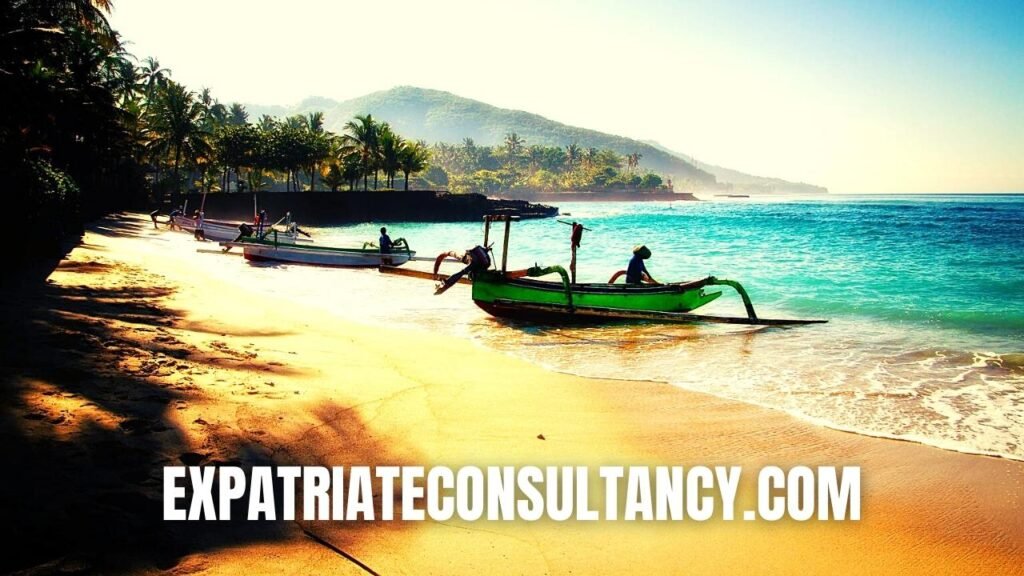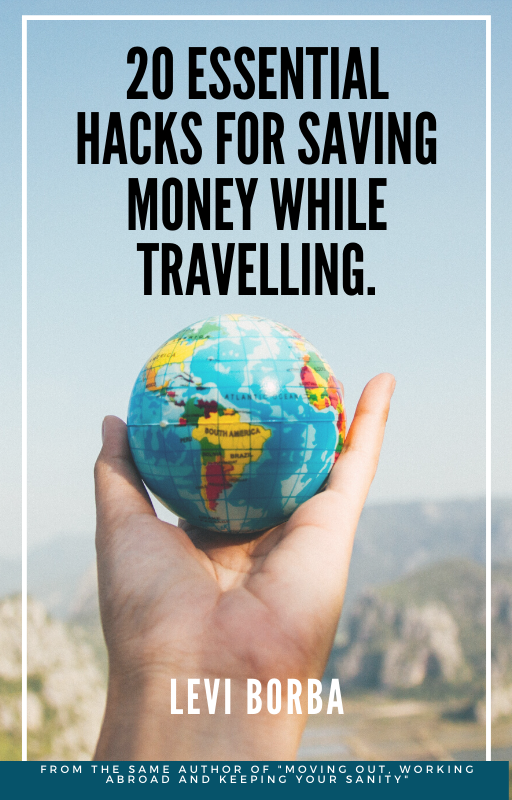Have you ever wondered why 70,000 Americans would move to Costa Rica?
If you are a fan of The Office like me, you probably remember when one of the characters, Toby moved to Costa Rica because he had enough of Scranton, Pennsylvania.
Like Toby, hundreds of thousands of Foreigners moved to this tiny Central American country.
A country that has some remarkable characteristics.
- Has one of the largest percentages of preserved jungles on the planet
- Has a very high literacy rate
- A very strong GDP growth
- And has a very strong tourism industry, receiving 2.3 million tourists per year
For such a small country, that is a lot, especially considering that Costa Rica has only 5 million residents.
But the most surprising thing is that this tourism, instead of destroying the environment like in many other countries,
Helps Costa Rica to preserve it! Yes, they are the world leaders in sustainable tourism.
But…
None of these good things are what really attracts foreigners to live and retire there.
There are some other very, very peculiar positive factors when living in Costa Rica, and there are also some negative things too.
So today you will discover the Pros, Cons, and the Best Places to retire in Costa Rica.
And by the end of this video, I will reveal WHY there is an increasing worry among Americans living there… yes, some things are not that good anymore.
Let’s start with the PROS of retiring to Costa Rica

And don’t worry. I will not talk about the weather or the beaches. If you came to this video about Costa Rica, you already know that the weather there is warm and the beaches are splendid.
Let’s be more pragmatic, and the first Pros I want to tell you about is…
The affordable private healthcare system in Costa Rica when compared to the US.
Private healthcare in Costa Rica is delivered through numerous hospitals and clinics, primarily located in urban areas like San José. These facilities are equipped with modern technology and staffed by highly trained professionals, many of whom have received part of their training in the United States or Europe.
The Hospital Clinica Biblica, for example, even attracts foreigners who travel to Costa Rica on medical tourism.

That means they travel all the way to Central America to have medical procedures performed in this hospital due to the high quality and affordable prices.
When comparing costs, the differences are striking. For instance, a typical knee replacement surgery in the United States can cost anywhere between $30,000 to $50,000. In contrast, the same procedure in Costa Rica costs around $11,000 to $13,000. Similarly, a dental crown in the U.S. might cost around $1,000 to $1,500, while in Costa Rica, it typically costs between $300 to $600.
These substantial savings extend to other procedures as well, such as heart bypass surgery, which costs around $120,000 in the U.S. but only about $25,000 in Costa Rica.
The second positive side of Costa Rica I want to tell you about is…
The ease of obtaining residency
Costa Rica offers several residency options that cater to different needs and lifestyles. One of the most popular is the “Pensionado” program, which requires a guaranteed monthly income of at least $1,000 from a pension or retirement fund. Another option is the “Rentista” program, which necessitates a monthly income of $2,500 for at least two years or a deposit of $60,000 in a Costa Rican bank.
Compared to countries like the United States, Canada, or many European nations, Costa Rica’s requirements are simpler and more accessible.
In contrast, Costa Rica’s residency programs are designed to attract retirees and individuals with a stable income, making it easier for those who wish to enjoy a peaceful life in a tropical environment.
And talking about the environment…
Another great advantage of Costa Rica is how friendly are the locals, known as Ticos.
Their welcoming attitude is deeply embedded in their culture, which emphasizes simplicity, gratitude, and enjoying life in the present moment. This positive and inclusive mindset makes Ticos extremely approachable and hospitable, especially to expats and tourists embracing the Pura Vida lifestyle.
And since we touched the subject of expats, and there are many of them in Costa Rica, that forms another positive factor.
Costa Rica hosts a large and diverse expat community, with estimates suggesting that over 70,000 foreigners have made the country their home. This community is spread across different regions, each offering unique lifestyles and amenities.
Even if you are not fluent in Spanish, it will not be difficult for you to make friends, since there are so many foreigners.
HOWEVER….
I truly, truly recommend you to learn Spanish.

And this is directly related to our last positive point:
Costa Rica’s local dialect of Spanish, known as Costa Rican Spanish
It offers several benefits for expats living in the country. Its clarity and ease of learning make it particularly advantageous for non-native speakers.
Costa Rican Spanish is characterized by its slow and clear pronunciation. Unlike other Spanish-speaking countries where words are often slurred together, Costa Ricans enunciate more distinctly, making it easier for learners to understand and follow conversations.
Another unique aspect is the pronunciation of the letter “R”. Costa Ricans often pronounce “R” similarly to how it is pronounced in English, reducing the difficulty for English speakers trying to adapt their pronunciation skills.
Now you might be wondering why we didn’t mention the Cost of Living as one of the Pros.
The Cost of Living Dilemma
The reason for that…. is that the cost of living in Costa Rica might be at the same time one of the pros and one of the cons of this beautiful country.
Let me explain why.
Remember in the beginning when I said that more than 70,000 Americans moved to Costa Rica?
When you have so many people from rich countries moving to a small country in a short period of time
One of the main benefits for the country is that these foreign residents bring a lot of money. They inject this money in the economy.
But at the same time, that causes inflation.
And that is exactly what happened in Costa Rica, especially in popular areas like Nicoya and Tamarindo.
From 2021 to 2023, Costa Rica saw a substantial increase in its foreign resident population. In 2022 alone, there were over 300,000 legal foreign residents, contributing to the demand for housing, goods, and services.
According to local real estate reports, property prices in these areas have increased by approximately 15-20% over the past two years.
The Central Bank of Costa Rica reported that consumer prices for basic goods and services rose by 6.9% in 2023, further indicating the inflationary impact of increased demand.
Of course, there are other factors pressing inflation, it is not the fault solely of the influx of foreigners.
Another thing that made the cost of living in Costa Rica become more expensive, especially for foreigners, is their currency.
The Colon, gained a lot of force against the dollar in the last few years.
In 2021, one dollar could buy almost 700 Costa Rican Colon. Today, it buys only 522.
A strong currency might be good for locals since imported goods tend to be cheaper. But if your pension is in US dollars, it will make everything more expensive for you.
Said that, when we compare the prices of living in Costa Rica with the US, Canada, or England, it is still way cheaper.
For example, to live in Boston, Massachusetts, is 116% more expensive than to live in the most expensive city of Costa Rica.

Vancouver? 64% more expensive than the Costa Rican capital.

But let’s say that you live on the other side of the Atlantic, in Liverpool, England.
Your cost of living there is almost double what you would spend in Costa Rica!
The best part is actually how good in you can live in certain parts of Costa Rica when compared to the US in terms of quality of life.
In a few minutes, I will show you a price comparison of what kind of house you can rent for $1000 per month in Costa Rica vs the US. You will be shocked.
But for now, let’s talk about the NEGATIVE side of living in Costa Rica—the Cons.
And I will list them from the not-so-bad negative things to the worst ones.
The first is the poor infrastructure in some parts.
In some parts of the country, there are frequent power and water outages, which can be disruptive to daily life and hinder productivity, especially for those working remotely or running a business online. Additionally, the internet quality is not always reliable
There are also limited conveniences. If you are used to ordering everything online and having it delivered to your door,
in Costa Rica it might be slightly more difficult due to limited e-commerce options and logistical challenges.
Bureaucracy is another con of Costa Rica, as well as many Latin American countries.
Let’s say that you plan to buy a house. Property transactions typically take 30-60 days to close, with various costs like transfer taxes and legal fees adding up to about 4% of the property’s value.
Everyday tasks like banking, paying bills, or setting up utilities often require in-person visits and navigating through various offices and procedures. Long lines and inefficiencies are common.
Now let’s say that you ask your family in the US or Europe send to you some goods to your address in Costa Rica. You might end up paying import task. Yes, you heard it right. It is a bit random, but the government might tax you even on personal items, which can be a surprise for many expats.
So we talked about the bad infrastructure in certain parts, limited offer of services, and bureaucracy, but we still didn’t mention the worst negative aspect of living in Costa Rica.
Can you guess what we are talking about?
It is violence and crime.
That might be a surprise for those who knew the Costa Rica of 10 years ago. But things changed.
It is very curious how Costa Rica took the opposite direction of El Salvador. While in the first, violence soared, in the second violence plunged.
The reasons for that are many, but the numbers don’t lie.
Costa Rica saw its murder rate jump from 11.7 in 2018 to 17.2 per 100,000 people in 2023.
Reported assaults rose by 19.5% in only one year – one every 49 minutes.
Home robberies went up by 15% – one every 80 minutes –
and carjackings and the theft of shipping containers rose by 30% and 14% respectively.
I asked a local for the reason why this is happening, and this is his answer:
“At least 95% of the murdered people in my country are related to the illegal trafficking of substances, drug territories and paybacks of the same group. The numbers might seem high cuz we are in the middle of the American Continent so all the drugs should pass through here and then will be moved to Mexico, US and Europe and there are small groups of people fighting for this power and money. Americans told us most of the time that they feel 10 times better and safer here than in their own country so picture that my friend.”
So this means the reason for violence in Costa Rica is similar to the crime spike in many other Latin American countries: Gang wars.
Now, If the pros of living there outweigh the cons for you, get ready to see one of the most impressive features of this small country.

The Best Places to Retire in Costa Rica, and Their Prices

I will show you how the type of house you can afford there, and how it compares to the US.
The destination most sought by expats is the province of Guanacaste, on the Pacific coast. It has splendid nature, wonderful beaches, and a very welcoming community.
So the prices we will show you are from houses in this region.
If you are looking for a more luxurious choice, this house here with 390 square meters in an enormous terrain of 7000 square meters and equipped with 6 rooms, 3 bathrooms, and your own piece of jungle, costs only 185,000 dollars!

If instead of buying you would prefer to rent, it would cost around $1000 per month.
Do you know what you get in Florida, in Fort Lauderdale, a place so many retirees dream about, for this price?
This tiny studio.

So what would you prefer? Gigantic hacienda that looks like from a movie.
Or a tiny studio in Florida?
Now let’s say that you don’t want to spend 185,000 dollars, but less than half that amount: 90,000 dollars.
You might be thinking that with such a low amount it would be impossible to live in the most beautiful region of Costa Rica, right?
Wrong.
How much do you think it costs this charming, modern house with 2 bedrooms in Guanacaste? 85 000? 80 000? 70 000?

Less!
It is quoted for 33.9 million colons, which means…. less than 65,000 dollars!

Now, do you know what you get in Florida for less than 65,000 dollars?
This empty lot in Cape Coral!

Because even this shed in Port Richey costs 99,000 dollars.

Now, if you prefer to live in Europe, check our article on the countries with the best cost-benefit to retire in Eastern Europe.
Levi Borba is the founder of expatriateconsultancy.com, creator of the channel The Expat, and best-selling author.. You can find him on X here.




